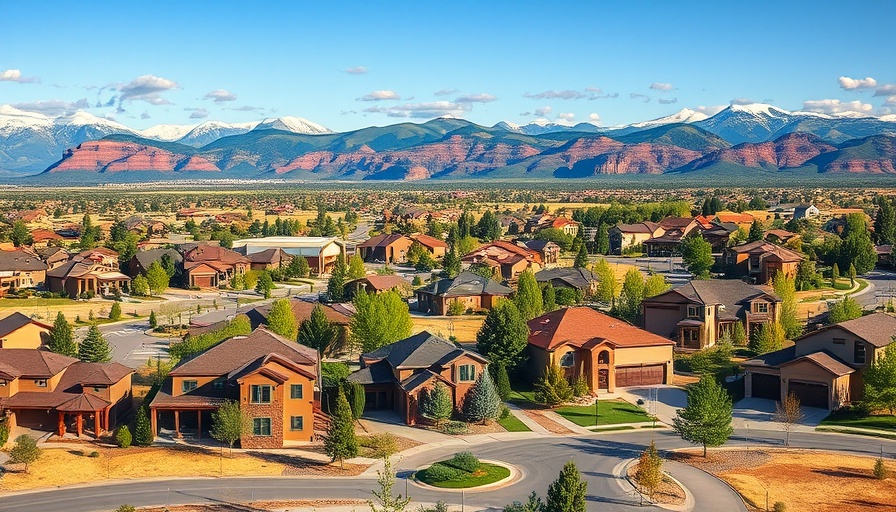
The Current Landscape of Colorado's Real Estate Market
As of early 2025, Colorado's real estate market is navigating through a sea of change, characterized by an influx of inventory and cautious buyer sentiment. According to recent reports, including insights from the Colorado Association of Realtors, the availability of homes has risen significantly, providing buyers with more options than they’ve had in years.
Understanding Rising Inventory
In February, new single-family listings increased by a notable 3.6%, totaling 6,937, while the market saw a spike in condo and townhome listings of 3.8%, up to 2,489. This rise in inventory is a double-edged sword: while buyers enjoy increased choices and bargaining power, the growing supply has outpaced sales, raising concerns about the overall market health.
Interest Rates and Affordability Issues Persist
The median price for a single-family home in Colorado stands at $575,000, showing nominal growth of less than 1% in recent months and a 3.6% rise year-over-year. Conversely, the median price for condos decreased by 1.9% month-over-month, showcasing the complexities of the current market dynamics. With interest rates lingering in the mid-6% range, many potential buyers remain on the sidelines, hesitating due to affordability concerns and uncertainty about the economic landscape.
Buyer Sentiment: Navigating Uncertainty
Despite the increase in available homes, buyer confidence is waning, largely attributed to fears surrounding job security and the broader economic climate. Jay Gupta, a broker associate in Colorado Springs, emphasizes that “the hesitation stems from uncertainty over whether job stability is within reach.” Consequently, many buyers are experiencing paralysis by analysis, carefully weighing their options before committing to a purchase.
Regional Variations within Colorado
The real estate market in Colorado is far from uniform. For instance, Colorado Springs noticed a dramatic 32.5% year-over-year increase in inventory, resulting in the highest supply of homes since 2014. However, this has not translated into robust sales, with transactions declining by 7.8% compared to the previous year. In regions like Vail, the story is somewhat similar—inventory surged by 15.6% in the last month, yet transactions plummeted by almost 50%. Such regional discrepancies underscore the diverse challenges and opportunities across Colorado’s real estate landscape.
Changing Buyer Demographics
As interest rates and economic uncertainties shape the market, the profile of homebuyers is also shifting. With luxury real estate becoming more accessible, homes priced above $5 million now account for a significant share of the market—rising from just 4% pre-pandemic to 12% today. High-net-worth buyers remain active, providing unique pricing pressure on overall market dynamics and suggesting that the high-end market may not contract as sharply as that of more affordable housing.
Looking Ahead: Signs of Recovery?
Despite the clouds of uncertainty hanging over the market, there are optimistic projections for the recovery of Colorado’s housing sector later in 2025. Experts believe that as the economic environment stabilizes, alongside potential declines in interest rates, the momentum could shift back toward more robust sales, encouraging hesitant buyers to enter the market.
In conclusion, while the current scenario in Colorado's real estate market is complex, understanding these nuances allows buyers and sellers to make informed decisions. Keeping an eye on market trends and maintaining flexibility in negotiation strategies will be key as we navigate the evolving landscape.
Why Buyers Should Stay Updated
For those interested in navigating this intricate market, continuous education and awareness of regional specifics is essential. Engage with local real estate professionals, monitor economic trends, and be prepared to adjust your strategies as the market continues to evolve.
 Add Row
Add Row  Add
Add 




 Add Row
Add Row  Add
Add 

Write A Comment